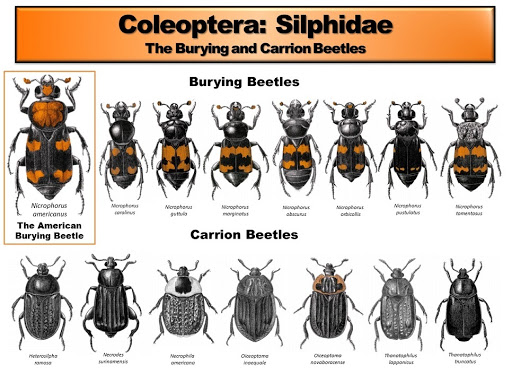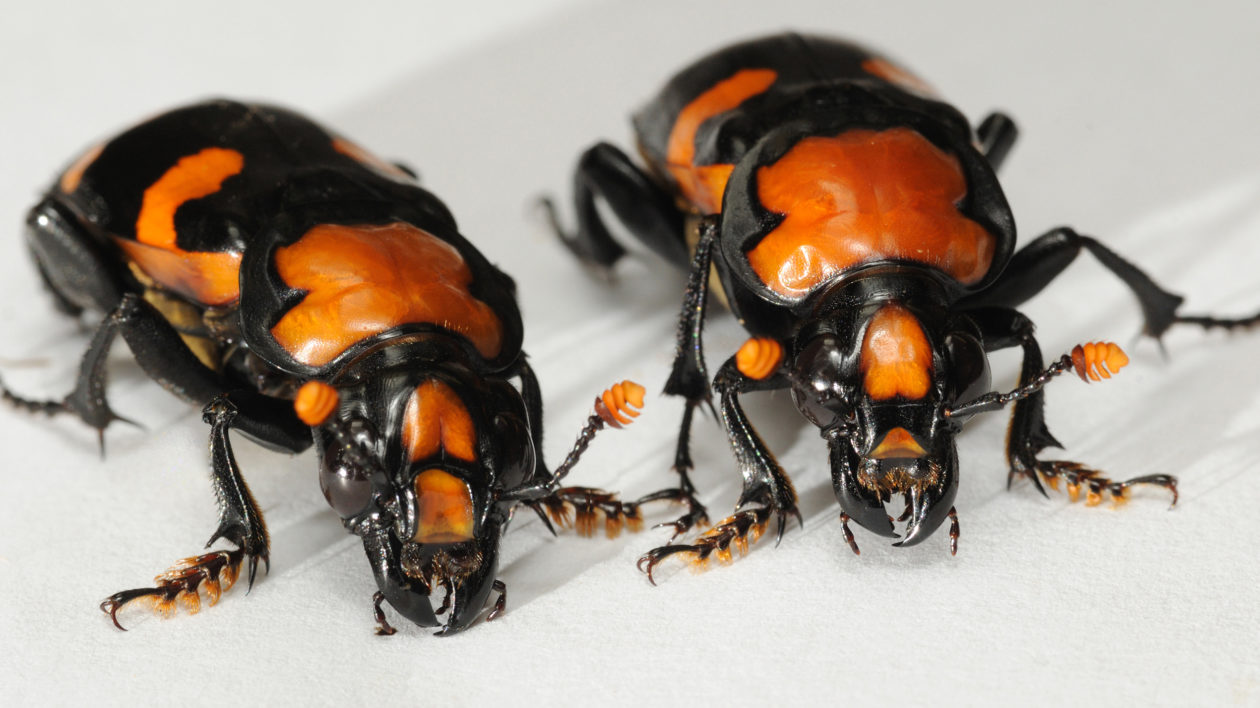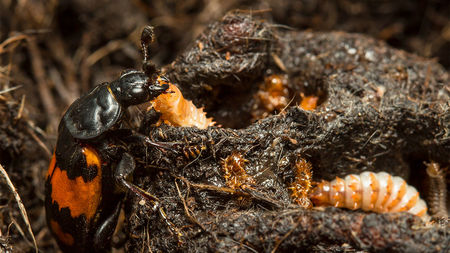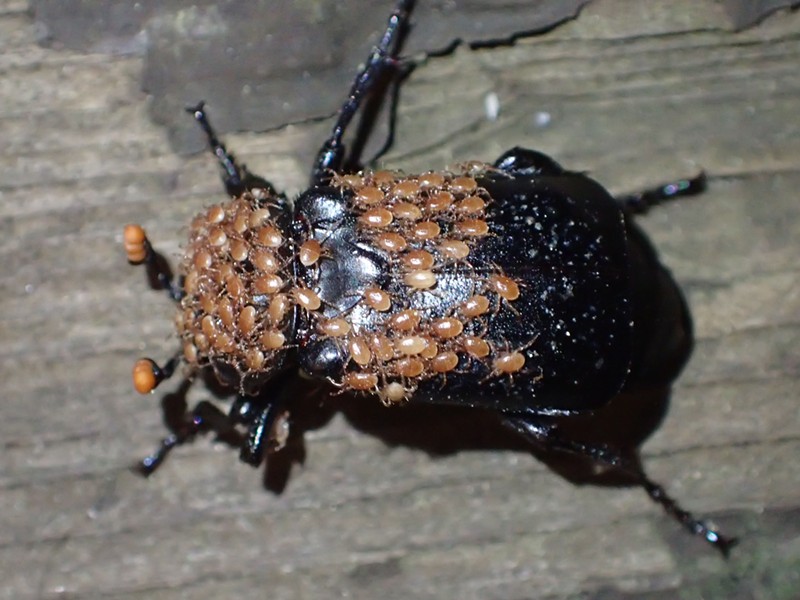
Beetles are a favorite of mine. They make up 25% of the world's total species, and are filled with diverse, interesting forms and behaviors. And my favorite of the bunch is the humble burying beetles, of the genus Nicrophorus in the family Silphidae, and also known as the Gravedigger Beetles. Just from a glance, these beetles stand out. The black and orange patterns on their elytra vary depending on species and individual, but most have at least some orange on their body, and some have patterns that resemble jack-o-lantern faces, giving them a delightfully spooky appearance. Personally, I think they look gorgeous. Simple but bold, with plenty of accents on their limbs and faces to make them stand out. Plus, I've always been a sucker for Halloween-themed things. But their appearance is only the tip of the iceberg.

Despite their inuocuous looks, they have an exceptional method of reproduction. The beetles have large chemoreceptors at the end of their antennae, and thus have a strong sense of smell, easily able to find rotting flesh from a distance. When they find a good-sized carcass, usually that of a rodent or bird, they'll attempt to claim it, and fight off other pairs which have likely been attracted. If they're successful, they'll begin to bury it. It's a complex, time consuming process, involving removing hair and feathers, covering the carcass in anti-fungal secrections, and digging out a hole. It typically takes around 8 hours, but it depends on the size of the carcass and the beetles. Eventually, the beetles will have a crypt, with fur lining the walls and surrounding a ball of flesh that will remain there until it's fully eaten.

Now they lay their eggs and wait. Eventually, the larva, hidden in the soil around the crypt, will burrow out to meet their parents. The larva are born weak, and often beg for food, and the parents respond by regurgitate pre-chewed carrion for their children. Eventually, the carrion runs out, and the parents dig their way to the surface while the larva burrow into the soil to pupate into adults. It's a complex process, and stands out for the fact that pretty much no other beetle does anything like it. Hell, few insects do anything like it. Most simply lay their eggs in a good place and hope for the best, if they do anything at all. The only things that come close are earwigs, where the mother carefully protects and cares for offspring until their second molt, and social insects such as ants and certain wasps. Notably, all those examples involve only the mother or female relatives. As far as I know, no other species of insect has the same level of parental care from both parents.

But these bugs do not exist in a vacuum. They have a symbiotic relationship with certain mites, which hitch a ride and eat maggots found on the carcass, but also seem to reduce the number of successful larva. It's an interesting, but poorly understood relationship. More complex than that is the relationship between the beetles and humanity, which has a quite the effect. Most species are doing okay, though their habitat has shrunken over the years, as has the availability of carcasses. It's thought that habitat loss among other animals has forced some species which typically hunt into scavenging, creating tougher competetion, and dogs, which can dig and will eat carrion, may be worsening the pressure. However, the American Burying Beetle, the largest species, has been affected heavily, as it is now critically endangered, and it's range has been reduced to only a few sparse pockets. It's been suggested that the extinction of the passenger pigeon was a factor, since they were once incredibly common and a good size for these larger-than-average beetles to nest in. Whatever the case, they are in danger.
Humans have benefitted immensely from these beetles, too. Some may call them gross, but they remove disease-bearing carcasses from the wild, and because they follow a behavioral pattern which allows for forensic investigators to learn more about the time of death for human corpses. And more important than the practical benefits they have for society is the role they have in the world. They are entirely unique creatures, with an importance place in the ecosystem and a fascinating lifestyle. Learning about how they chew up and regurgitate rotting rats for their coddled children made me feel genuine joy, and I hope it did the same for you. They brought something unique to the world, and they should be appreciated for that.
~~~~~
Click here to go back to the biology index.
Click here to return to the homepage.